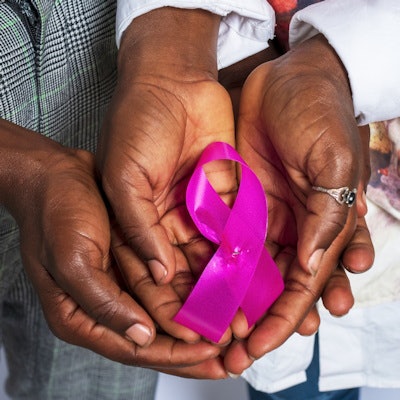
The state of Washington saw larger declines in breast cancer screening among underserved populations during the COVID-19 pandemic, magnifying disparities that were present before the outbreak, according to research published May 24 in JAMA Oncology.
A group of researchers led by Ofer Amram, PhD, from Washington State University found a 50% decrease in screenings from 2019 to 2020. However, "greater and significant" reductions in the number of screenings from these years were seen for women of various racial, ethnic, and socioeconomic backgrounds.
"We know that inequities in access to healthcare, including screenings, existed prior to the pandemic. However, these inequities were magnified during the pandemic," Amram told AuntMinnie.com.
Previous studies have reported that the COVID-19 pandemic caused overall declines in breast cancer screening in the U.S., while other studies have documented overall widening disparities in access to healthcare during the outbreak. Amram called the team's study "one of the first" to look at breast cancer screening inequities during the pandemic.
The researchers used clinical data to examine differences in breast cancer screenings before and during the COVID-19 pandemic overall and among sociodemographic population groups. Data were collected from more than 230 primary care, specialty care, and urgent care clinics, and eight hospitals across Washington state.
| Number of breast screenings (April-December) | |||
| 2019 | 2020 | Percent change | |
| All women | 55,678 | 27,522 | -50.6% |
| Hispanic | 1,727 | 619 | -64.2% |
| American Indian/Alaska Native | 215 | 84 | -60.9% |
| Mixed race | 1,892 | 828 | -56.2% |
| Native Hawaiian or Pacific Islander | 365 | 166 | -54.5% |
| Asian | 2,779 | 1,265 | -54.5% |
| Black | 2,320 | 1,069 | -53.9% |
| White | 45,572 | 23,163 | -49.2% |
Also, women living in rural areas experienced a greater reduction in screenings than their urban counterparts.
Several factors may have come into play for these disparities, according to the researchers.
One is increased unemployment during the pandemic shutdown among those already living in poverty, which may have further reduced access to health insurance. School closures also led to competing demands at home, they wrote.
In addition, limited access to health and screening services among rural women may have increased during the pandemic.
The researchers noted that addressing the decline in breast cancer screening during the pandemic requires addressing social barriers to screening, especially for higher-risk women.
"Our findings suggest another inequity in the COVID pandemic due to greater reduction in utilization of cancer screening services for women with lower socioeconomic status, who are in underserved racial/ethnic groups, and who live in rural communities," they wrote.
Amram added that it's important to realize that health is an investment that requires resources, such as having a stable, well-paying job; maintaining health insurance; and having access to a trusted healthcare provider.
"These same barriers got worse during the pandemic," he said.
Amram told AuntMinnie.com that the team is looking at inequities in screening for other cancers. The group is also looking at how the use of telehealth can improve access to screening and address inequities.




















